 While it is typically the AR crowd that lays claim to the 300 AAC Blackout, the cartridge’s origins are deeply rooted in pistol silhouette shooting. In 1963, Remington shortened the 222 Remington to create the 221 Fireball for their bolt action XP-100 silhouette pistol. Shortly thereafter a wildcatter, who couldn’t leave well enough alone, opened the 221 Fireball case to accept 0.308″ bullets and created the .30-221 Fireball.
While it is typically the AR crowd that lays claim to the 300 AAC Blackout, the cartridge’s origins are deeply rooted in pistol silhouette shooting. In 1963, Remington shortened the 222 Remington to create the 221 Fireball for their bolt action XP-100 silhouette pistol. Shortly thereafter a wildcatter, who couldn’t leave well enough alone, opened the 221 Fireball case to accept 0.308″ bullets and created the .30-221 Fireball.
In 1992, SSK Industries formalized a version of the 30-221 Fireball cartridge for military, law enforcement and security applications and trademarked that cartridge’s name, the “300 Whisper”. The 300 Whisper received CIP certification in 2009.
In 2009 the .30-221 Fireball was massaged into the 300 AAC Blackout; a SAAMI standard cartridge in 2011, a CIP standard cartridge in 2015. Developed for a military client by Advanced Armament Corporation, in 2012 it was packaged as part of the 300 AAC Blackout Low Visibility Carbine.
In real terms, there isn’t a meaningful difference amongst these cartridges. Contrary to Wikipedia’s unfettered consortium of information, both 300 Whisper and 300 AAC Blackout share the same CIP Maximum Average Pressure, which is 3700 BAR or 53,651 PSI equivalent.
A chamber reamer for the 300 AAC Blackout cuts a longer throat than the 300 Whisper; a change to accommodate intended longer, heavier projectiles. Comparing CIP standards, the Blackout throat is 9.14mm (0.360″) while the Whisper is 6.98mm (0.275″), the Blackout overall length is 57.40mm (2.260″) compared to 57.00mm (2.244″) for the Whisper.
Thank you for allowing me to cough up that Samuel Taylor Coleridge like informational hairball. Now let’s move on – .
Design to original purpose
|
Ruger American Rifle Ranch |
|
| Origin | Newport, NH |
| Manufacturer | Sturm, Ruger & Co. Inc. |
| Model | 6968 |
| Type | Tri Lobe Bolt Action 70° Lift |
| Caliber | 300 AAC Blackout |
| Capacity | 5+1 |
| Barrel Length | 16.12″ 5/8″-24 thread |
| Rifling | 1:7″ RH 6 Groove |
| Nominal Weight | 5.9 lbs |
| Overall Length | 36″ |
| Stock | Flat Dark Earth Synthetic |
| Hardware | Matte Black Alloy Steel |
| Length of Pull | 13.75″ |
| Drop at comb | 5/8″ |
| Drop at heel | 3/4″ |
| Sights | None |
| Scope | Picatinny Rail Included |
| Trigger Pull | Adjustable 3 – 5 Lbs |
| Safety | Tang Two Position |
| MSRP | $529 |
The 300 Blackout is a more at home in a bolt action firearm than an AR autoloader for the purposes of hunting. The Ruger American Rifle Ranch is lighter and more compact than a typical AR. The Ranch runs cleaner and cooler and, when suppressed, it lacks the mechanical racket of a cycling AR. Reliably running 300 Blackout through an AR can be a bit iffy, at times requiring buffer, buffer spring and gas flow juggling to achieve the optimal result. This is particularly the case when moving from suppressed to unsuppressed or running through a full range of bullet weights. The bolt action Ruger will shoot whatever is fed and not notice the difference.
The plan? Ah yes, the plan… man
Part 1 – Peek and poke at the hardware, round up some variation of factory ammo, shoot it, baseline performance and document for posterity. Analyze the psyche of the Ruger consortium that placed the designation “Ranch” out there in afterthought fashion, rather than between “American” and “Rifle” as logic, Geneva Convention and human decency would dictate.
Part 2 – Handload the crap out of the 300 Blackout, stuff the Ruger American Ranch Rifle full, shoot up the targets at the end of the range and count and measure the resulting holes.
No, those threads are not there just for the heck of it
The threaded barrel takes on a unique appearance in the Ruger Ranch line up as the barrel tapers then flares before transitioning into 5/8″-24 threads. The idea is to keep weight down with a standard taper, but also provide solid footing for a silencer or other type of muzzle device.
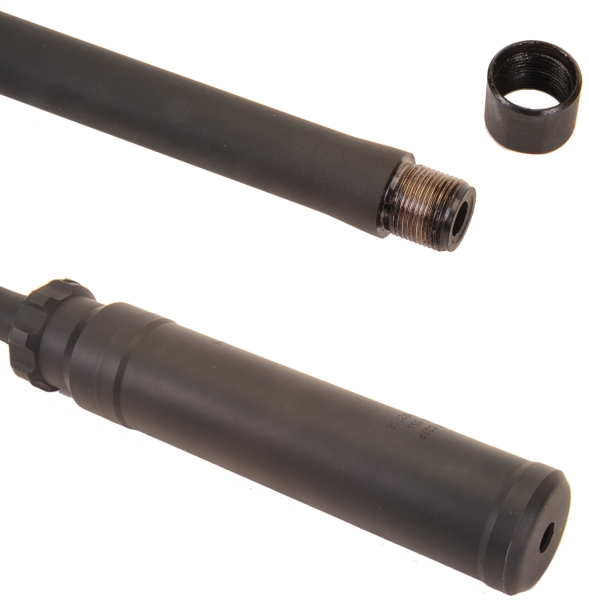
After shooting suppressed with good product for a while, the benefit to ears, the typical boost in velocity and often positive influence on accuracy quickly makes them routinely useful equipment. In less than wilderness areas, they make for a considerate neighbor. For the hunter, less game is driven two states over after a missed shot.


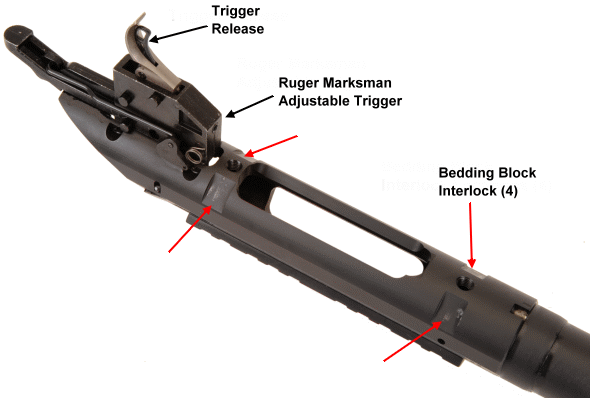
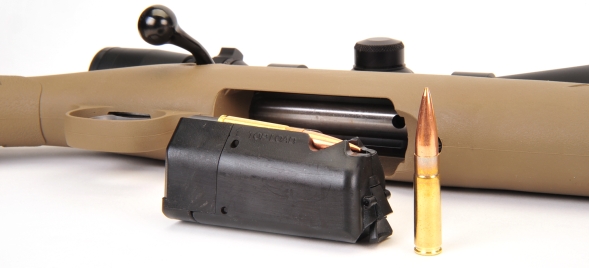
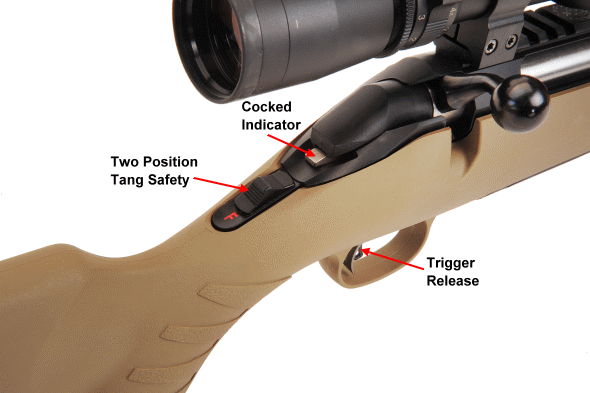
The American Rifle in all version have a number of safety features that don’t get in the way. The tang safety is easy to operate from a shooting hold, but it is positively engaged in either position. The cocked indicator provides a visual cue for the rifle’s cocked / uncocked condition. The trigger release assures a finger is on the trigger before the sear releases.
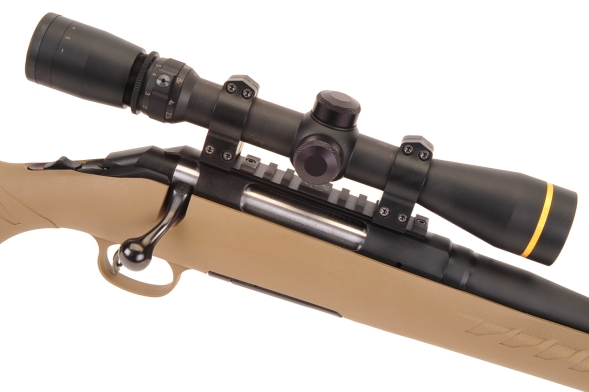
The Ruger American Rifle Ranch is shipped with a Picatinny rail installed on the receiver. In this example, a set of Warne steel rings attached securely. The rail can be removed, the receiver is drilled and tapped so other mount systems can be installed.
Poking around a bit…
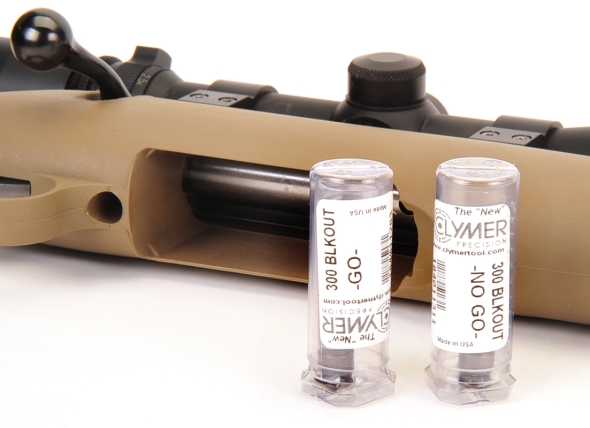
Before shooting, a quick check of headspace was done. With a clean chamber and the extractor removed from the bolt, the bolt closed in the Go gauge, but The No Go gauge did not. Clymer offers three types of headspace gauges, defined by the company as: Go minimum spec, Field maximum spec and No Go 0.006″ greater than Go. The Go gauge headspace measured 1.073″ the No Go Gauge measured 1.081″, which by Clymer description should have been 1.084″.
The SAAMI specified 300 AAC Blackout chamber headspace is 1.0789″ minimum and 1.0889″ maximum, a 0.010″ range. The datum line shoulder diameter is 0.3510″ +0.002″/-0.000″. This Ranch example has a minimum chamber as verified by pulling measurements from fired brass, as indicated on the table below.
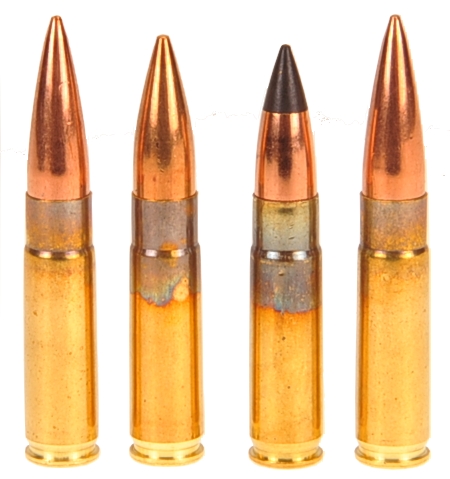
| Cartridge | Bullet Type | Bullet Grains |
*FPS 16″ | Case Headspace “ | Case Shoulder Diameter “ | |||||||
| Rated | Actual | SAAMI | Unfired | Fired | SAAMI | Unfired | Fired | |||||
| Min “ | Max “ | Min “ | Max “ | |||||||||
| ADI MSR | OT Match | 125 | 2132 | 2228 | 1.075 | 1.082 | 1.068 | 1.079 | 0.357 | 0.362 | 0.359 | 0.364 |
| ADI MSR | FMJ | 144 | 2021 | 2066 | 1.075 | 1.082 | 1.066 | 1.080 | 0.357 | 0.362 | 0.359 | 0.363 |
| Winchester | Poly Tip | 150 | 1900 | 1864 | 1.075 | 1.082 | 1.073 | 1.080 | 0.357 | 0.362 | 0.360 | 0.364 |
| Remington | OT Match | 220 | 1050 | 1026 | 1.075 | 1.082 | 1.070 | 1.179 | 0.357 | 0.362 | 0.359 | 0.364 |
|
*SAAMI velocity and test barrel length for 300 AAC Blackout is 16″ CIP standard is 23.6″ |
||||||||||||
It can be deduced from fired brass headspace that the Ruger chamber was in spec on the minimum side because all fired brass exceeded the SAAMI minimum cartridge case length. We can also deduce the chamber is well inside spec for maximum length because the bolt would not close on the 1.081″ No Go gauge.
Judging from the shortness of factory brass, particularly Australian Defense factory ammo, going with a minimum chamber with the 300 Blackout would provide greater assurance of reliable ignition. In this case, The Ruger American Rifle Ranch fired every factory and handload fed without hesitation. Seems ammo makers always ran minimum to assure chamber clearance and to minimize material cost, but this seems a little extreme.
Factory rifle, factory ammo
The Ruger American Rifle Ranch was taken out of the box, cleaned of storage gunk, a scope was installed and it was shot. No break in rounds were fired and ammo came right out of Cabelas. Ammo was all brass and with Boxer primers.
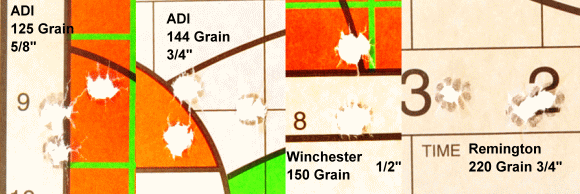
Setting aside the military’s view of effective range, for a Maine deer hunter two hundred yards would be a realistic game taking range, although in our part of the woods, I doubt a path between trees of that distance, or a hundred yards for that matter, might be tough to find. We’ll get handloads shot and documented and put together some ballistic tables for Part 2.

Email Notification